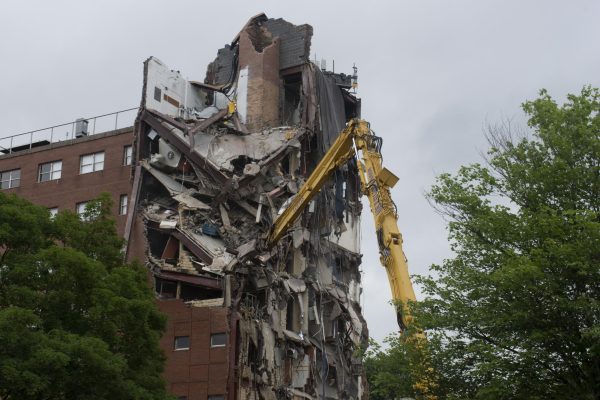University budget structure explained
With the rising cost of higher education, the question is often asked, what happens with the money?
Editor’s note: This is a two-part feature. The next part will be released next week.
With the rising cost of higher education, the question is often asked, what happens with the money?
“At Marshall, we are made up of approximately 30 different individual budget units,” said Jason Baldwin, budget manager. “Each of those units receive an independent budget unit file to complete, and in that file, they communicate with us, the budget office, their various sources of revenues and planned expenditures.”
Baldwin said the budget office then takes those individual files and consolidates them to make the university’s overall budget. He said the school of medicine’s budget is completed separately.
When it comes down to the actual number placement, Baldwin says it can be a complicated process. He says the overall money budget comes from revenue and expenditures.
“The revenues are projected based on projected enrollment, headcount. Institutional research prepares and shares enrollment projections that we will use to develop the revenue piece of that. We work within those projected revenues,” Baldwin said.
The state also has a part in the revenues.
“The projected revenues include the appropriations from the state,” said Katrina Eskins, budget director. “It’s a pretty big piece of our total that we have to work with.”
Eskins and Baldwin said they have worked with state budget cuts before. While last year did not see cuts, this year has had some proposed cuts.
Baldwin said the last increase in state appropriation was meant for a salary increase and was not based on the university headcount, leaving the university’s budget to be adjusted to accommodate the raise pool.
This year the structure used by the budget office to develop the overall budget has changed, said Baldwin.
“A lot of universities are moving to a zero-based budget development process,” Baldwin said. “Where traditionally, whatever your allocation was last year, I think we’ve maintained a stable allocation to our units over the last year or two. This year, given the pressures on our tuition and fee revenue and also this potential cut in state appropriation, it’s going to be even more important to focus on what our critical needs are.”
“It’s difficult for us to prioritize one college’s needs over the other. We have to make sure the service to our students, that those needs are met. That’s what we’ve attempted to accomplish here in this zero-based budget development process is for each unit to identify their critical needs, what has to happen to maintain that level of service to the students and to really keep things moving forward.”
Baldwin says the zero-based budget was used for the current year.
“We’ve attempted that process here for ‘21, and it seems to work,” Baldwin said. “The cash flow management side of that, things have seemed to be relatively stable despite the significant impact that COVID has brought, not only to the university but to our financials as well.”
Baldwin said the needs go where they are most needed within each unit.
“We are really looking at what the need is, and I think the level of funding, independent of drivers such as headcount, is hard to quantify,” Baldwin said. “The funding levels really follow the need of each individual unit.”
The prioritization relies on each group that sends in a budget request.
“We really are dependent on each college and the department of student affairs to tell us their needs,” Eskins said.
Baldwin and Eskins said the breakdown of needs per unit is the most significant focus on the new budget structure.
“Not just tell us what their needs are but justify those line by line, justify what those needs are,” Baldwin said. “Also give us the impact of if those expenditures were to be removed what does that impact look like, that’s the approach of zero-based processed.”
The budget office is currently working on the budget for the 2022 school year.
Brittany Hively can be contacted at [email protected].
Your donation will help continue the work of independent student journalism at Marshall University. If you benefit from The Parthenon's free content, please consider making a donation.










